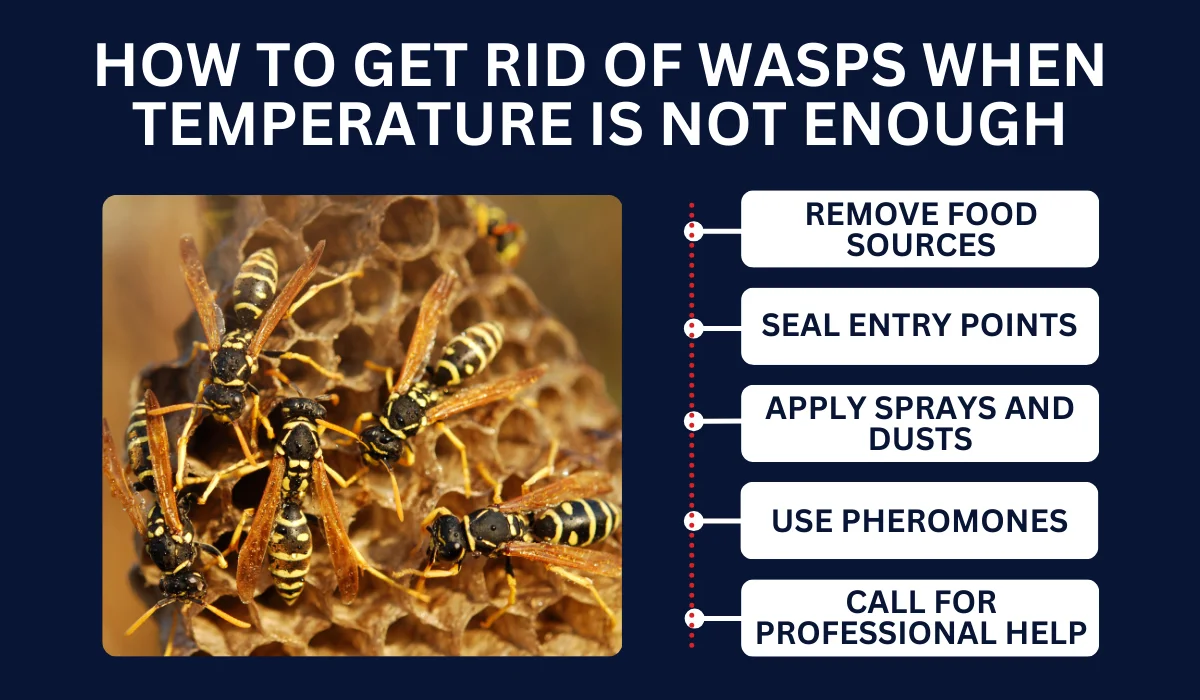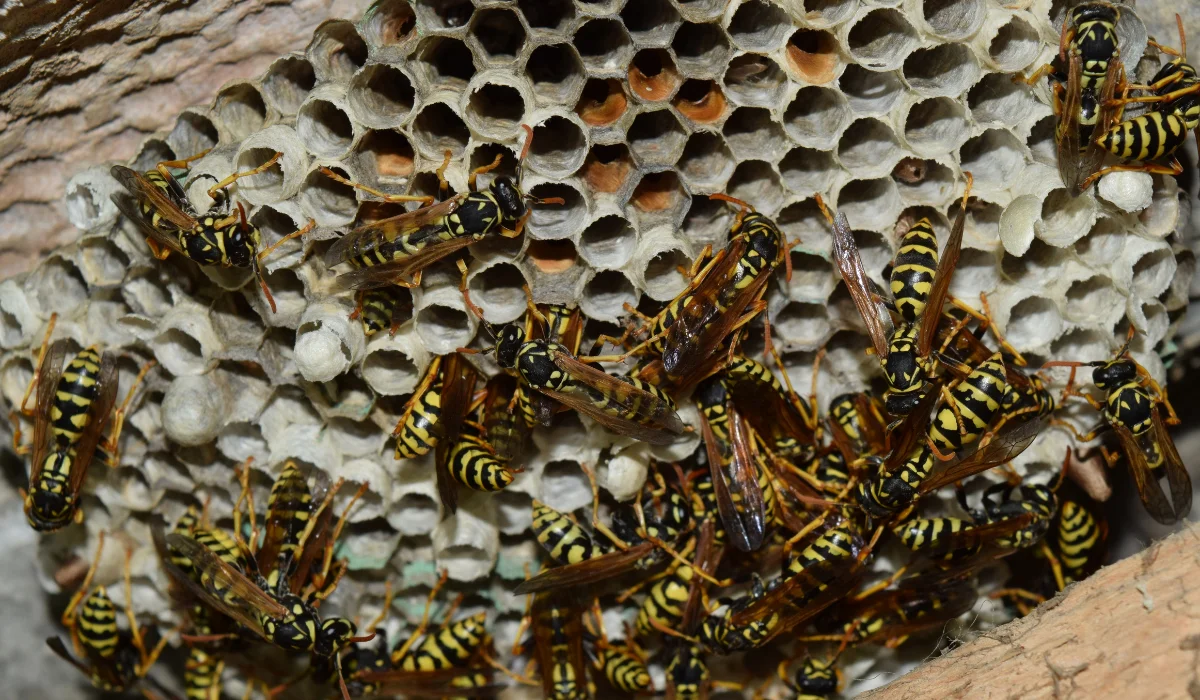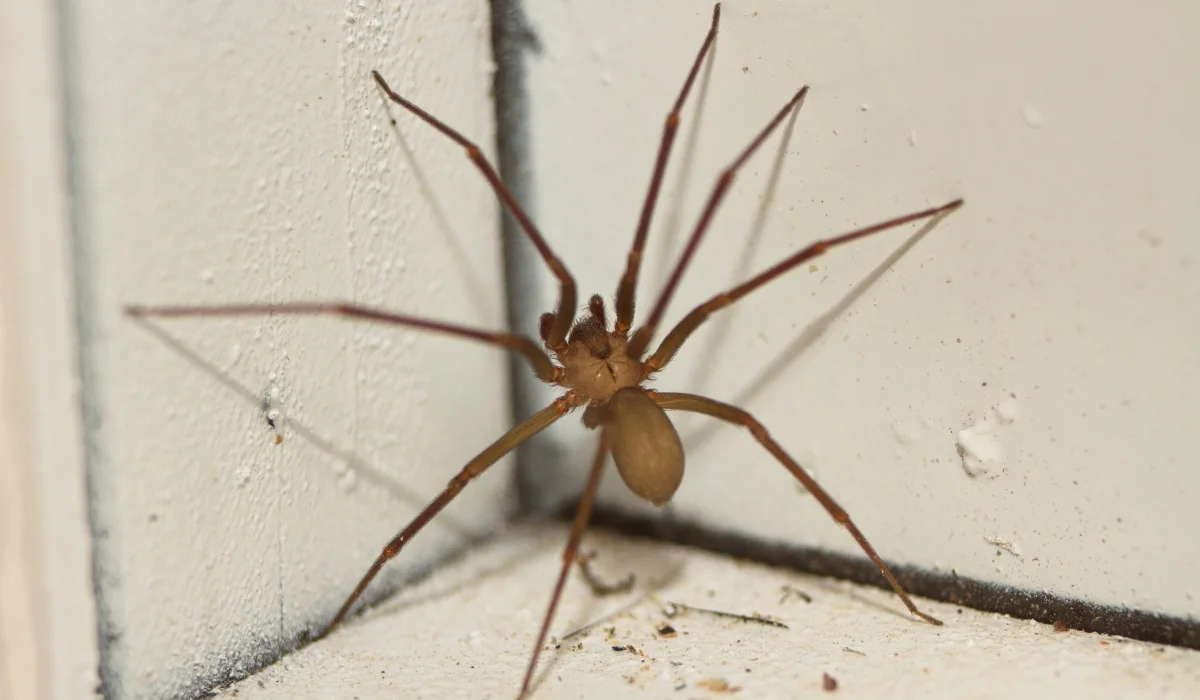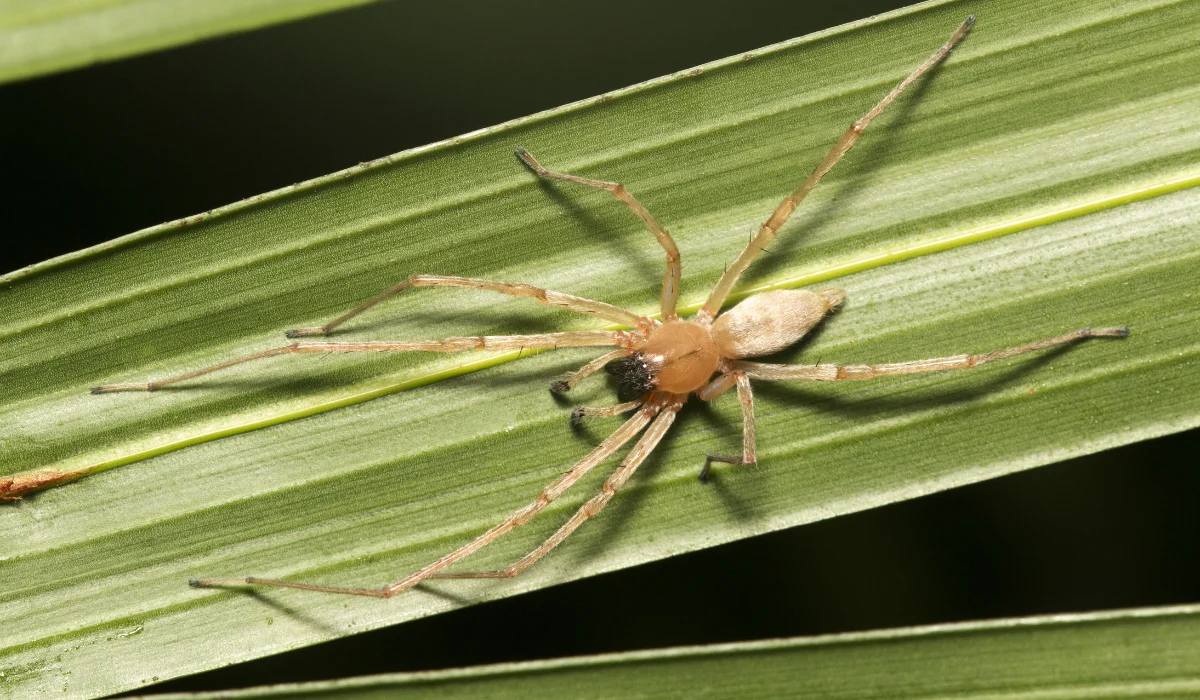Ever wondered why a wasp buzzing around your picnic suddenly disappears when autumn arrives? Wasps often die when temperatures drop below freezing, around 32°F (0°C).
How does temperature impact their survival in different climates? Keep reading to find out more about these stinging insects and their cold-weather limits.
Key Takeaways
- Wasps slow down when temperatures drop below 50°F, whereas most do not survive when the temperature hits 32°F.
- Very hot temperatures, especially over 104°F, can kill wasps by causing dehydration and stress.
- Some wasps survive winter by hibernating, with queens hiding in safe spots until spring.
- You can control wasp populations by targeting them during cold weather and hiring pest control professionals for long-term protection.
AT WHAT TEMPERATURE DO WASPS GO AWAY?
Wasps thrive within a specific temperature range and struggle to survive outside of it. As temperatures drop below 50°F, their activity and survival rates decrease. While they are most active in warm temperatures, temperatures over 104°F can kill them.
Most wasp species, especially those in temperate regions, struggle to survive colder temperatures. As the weather cools in late summer and into fall, wasp activity declines sharply.
| Temperature (°F) | Effect on Wasps |
|---|---|
| 50-59 (10-15°C) | Reduced activity, sluggish behavior |
| 41-50 (5-10°C) | Significant decline in survival rates |
| 32-41 (0-5°C) | High mortality, near-total colony death |
Extremely high heat that may last until the end of summer can also be lethal to many wasp species. During a heatwave, they may struggle to maintain hydration and regulate internal temperatures.
| Temperature (°F) | Effect on Wasps |
|---|---|
| 95-104 (35-40°C) | Increased stress, reduced activity |
| 104-113 (40-45°C) | Severe dehydration, high mortality |
| Above 113 (Above 45°C) | Near-instantaneous death |
CAN WASPS SURVIVE WINTER TEMPERATURES?
Some wasps make use of fascinating strategies to endure the winter months. As temperatures drop, new queens transition from active lives to finding sheltered spots to enter hibernation.
They remain inactive until favorable conditions return when they lay eggs in the spring. While underdeveloped larvae and worker wasps typically die off as cold temperatures set in, resilient queen wasps hibernate to start new colonies when warmer weather arrives.
Although most wasp species struggle with severe cold, some have adapted to endure moderate cold climates. This adaptation allows them to survive in colder environments.
HOW TO GET RID OF WASPS WHEN TEMPERATURE IS NOT ENOUGH

When the temperature isn’t enough to keep wasps at bay, you may need more tricks as a homeowner. Other DIY pest control strategies to try to avoid new nests include:
- Remove Food Sources: Wasps are attracted to sugars and proteins. During the summer months, be cautious about leaving food out during picnics.
- Seal Entry Points: Check for crevices, eaves, and other small openings around your home. Sealing these can prevent wasps from building nests.
- Apply Sprays and Dusts: Look for products designed for yellow jackets, European hornets, and paper wasps. Spray at night when they’re less active.
- Use Pheromones: Lure wasps with pheromone traps. Remove the nest with new colonies early to disrupt their life cycle.
- Call for Professional Help: Call the phone number of a pest control professional if the infestation is severe. They have the tools and expertise to tell them apart from beneficial pollinators in the ecosystem like honeybees.
WHEN TO HIRE A WASP EXTERMINATOR
Wasps nests near your home can quickly become a nightmare. If you notice wasps entering your attic or walls, it’s time to act. A nest inside is dangerous, risking you of wasp stings. Call for pest control help to remove it safely.
Whether you’re in Baton Rouge or New Orleans, seeking expert help should be easy. For immediate intervention for a severe infestation, let Lajaunie’s wasp control specialists tailor a solution that’s right for your home.
 By: LaJaunie's Pest Control
By: LaJaunie's Pest Control 


